ホーム → 文法 → DoJG main menu → 基本 → Basic Page 510
Particle
| A colloquial quotation marker. | That |
| 【Related Expression: そうだ1; と3】 |
(ks). ジェーンは踊らないって。
Jane said that she wouldn't dance/ They say that Jane won't dance.
(a). 今晩は雪が降るって。
They say it's going to snow tonight.
(b). 僕も行こうかって思いました。
I wondered if I should go there, too.
1. Quote+って2 is a colloquial version of Quote+と3. (⇨ と3) Any quotation which can precede と3 can precede って.
2. When there is a human topic in the って construction as in Key Sentence, the sentence is ambiguous as to whose quotation it is. The person who is quoting can be either the topic person or 'they'. But if a reporting verb 言う 'say' is used after って, then the sentence means 'The person (topic) says that ~'.
3. When って is not followed by a verb, the understood verb is 言う 'say'. Other verbs (i.e., 思う 'feel, think') cannot be deleted after って, as shown in Eample (b).
【Related Expressions】
I. 言った/言いました 'said', 言っている/います 'is saying' or 言っていった/いました 'was saying' can be deleted after って2, as seen in Key Sentence and [1] below, but not after と3 as seen in [2].
[1]
[2]
The difference between って2 and と3 is that the former is more emphatic and emotive owing to its glottal stop.
II. When the subject of the understood 言う is an unspecified person(s), as in the second interpretation of Key Sentence, って2 is similar to the hearsay そうだ1 'they say ~'. って2, however, is more colloquial and informal than そうだ1. (⇨ そうだ1) Xが言っていたけど 'X was saying but' or its variants are used when specifying an informational source in the って construction, not the usual Xによると, as shown in [3].
[3]